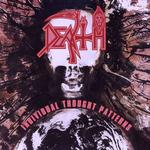
Death
Over the course of more than a decade and seven increasingly accomplished albums,
Chuck Schuldiner, the architect behind the ubiquitous DEATH, became a bona fide
heavy metal icon. Now widely recognized as the father of death metal (if a single
candidate must be chosen, his résumé is about as good as it gets), Schuldiner's singular
drive and ruthless creative vision guaranteed that DEATHwould ever represent the
cutting edge of the style's development. Indeed, while the savagely raw aggression
contained in DEATH's first three albums proved crucial to spearheading the first
generation of death metal bands, the astounding musicianship and increasingly
sophisticated songwriting found on their laterday efforts surely influenced even more
groups to explore the limits of extreme metal's most progressive outposts. By all
accounts a force to be reckoned with onstage, DEATHalso logged more frequent flier
miles than perhaps any other band of their ilk, undertaking numerous farreaching
tours despite suffering from continuous and often acrimonious musician turnover
within their ranks. Throughout this long journey and drastic evolutionary curve,
Schuldiner was to be the only constant, the effective mastermind behind DEATH's
continually groundbreaking career, and, as proven by his nearcanonization at the time
of his untimely passing, arguably unequalled in stature within one of rock's most
uncompromising style.
The story of DEATHbegins near Orlando, Florida, circa 1984, when vocalist/guitarist
Schuldiner formed a band named Mantas with guitarist Rick Rozz and drummer Kam
Lee. Although they'd yet to finish high school, the eager teens quickly set about trying to
replicate the most excessive heavy metal sounds imaginable, which they often heard on
demos obtained via the bustling underground tapetrading circuit existent at the time.
Many of these heavy metal sounds originated in the U.K., where bands like Iron Maiden,
Angel Witch, and Venom were riding high on the New Wave of British Heavy Metal;
others in continental Europe, where diabolical agents like Mercyful Fate, Hellhammer,
and Bathory were sowing the seeds of black metal; and others still in the American West
Coast, where young bands like Metallica, Slayer, and Exodus were redefining the genre
by injecting it with unprecedented speed and energy, thus giving birth to thrash metal.
All of these developments converged to spark the young Floridian's excitement, and the
soontobe rechristened DEATHspent the next few years refining their chops through
endless, arduous rehearsals and sporadic live performances. Their hard work and
perseverance finally paid off when a threesong demo tape called "Mutilation" began
drawing rave reviews in the metal underground, soon convincing Bay Areabased thrash
specialists Combat Records to sign the group.
When his bandmates balked at leaving Florida to record, Schuldiner simply left them all
behind (they would form a group called Massacre in his absence) and relocated to San
Francisco to team up with drummer Chris Reifert (later of Autopsy infamy) and record
DEATH's nowlegendary debut album, Scream Bloody Gore. Released in 1987, the LP
is considered DEATHmetal's first archetypal document; Possessed's protodeath
classic Seven Churches may have predated it by almost two years, but the fact of the
matter is that both were concurrent works from a demo perspective, and Scream Bloody
Gore merely arrived later. Also, while Seven Churches represented something of an
unplanned transition between thrash and death metal, Scream Bloody Gore more
clearly defined the new offshoot's true essence for the first time. Boiled down to the
most basic terms, this transition simply entailed propelling thrash metal's sheer speed
and ferocious execution into further inaccessibility with the addition of goreobsessed
lyrics delivered via often indecipherably growled vocals. Needless to say, this
unprecedented level of sonic hatred went down a storm with thousands of angry
metalloving teenagers across the world.
Having set his metallic dreams (or nightmares, as it were) into motion, Schuldiner
returned to Florida, where he reunited with his old chum Rick Rozz and drafted bassist
Terry Butler and drummer Bill Andrews to integrate DEATH's first touring lineup. The
quartet was also soon ensconced in Tampa's imminently famous Morrisound Studios
with future premier death metal producer Scott Burns (lots of firsts in this story, huh?)
and working on 1988's sophomore album Leprosy, which reprised much of the debut's
successful tricks without taking DEATH's sound much farther, due in part to Rozz's
disinterest in doing so and his increasingly mismatched guitar style. He was soon
unceremoniously ejected for his shortcomings and replaced by the far more gifted
James Murphy, who would barely last a year himself before embarking on a journeyman
existence that would take him to Obituary, Testament, and beyond, but nevertheless
contributed stellar fretwork to 1990's transitional Spiritual Healing. This album found
DEATHbeginning to relinquish some of the unrelenting velocity, mindless ferocity,
and often trite blood and gore lyrics which characterized death metal's infancy
(grindcore's fastrising legions, led by Napalm Death and Carcass would take it from
here), before diving headlong into its understandably experimental pubescent phase. In
practice, this meant introducing slower rhythms, increasingly complex dynamic tempo
changes, insidious melodies, and somewhat more enlightened and introspective, if no
less dark and cynical, subject matter, commenting on society's ills and injustices.
All of these exciting developments would come to greater fruition on 1991's pivotal
Human LP, but, given the acrimonious conditions that had plagued the Spiritual
Healing tour (Schuldiner literally went AWOL, leaving Butler and Andrews to fulfill the
band's extensive European engagements with the help of their roadies!), it's a wonder
DEATHsurvived long enough to record it. In his obsessive quest for perfection and
constant evolution, the obstinate Schuldiner had once again pushed his bandmembers
as far as their musical abilities could take them, thus mandating that an entirely new
group of players be cast to enact the next chapter in his grand scheme. Sure enough, the
sessions for Human convened a supergifted ensemble for the ages, namely guitarist
Paul Masvidal and drummer Sean Reinert of then still unsigned death/fusion sensations
Cynic, and fretless Bay Area bass wonder Steve DiGiorgio, who was borrowed from
Sadus for recording purposes only. This release, along with the even more commercially
successful Arise by Brazilians Sepultura, helped ensure that 1991 should go down as year
one of death metal's world saturation. At least in its original form, as hordes of gifted
new upstarts such as the aforementioned Cynic and Obituary, technical demons Morbid
Angel and Deicide, death/jazz experimentalists Atheist, Long Island natives Suffocation,
and an entire horde of burgeoning Swedish upstarts, were even then undertaking to
rewrite the rule book and challenge elder statesmen like DEATHfor genre supremacy.
Not to be outdone, Schuldiner simply upped the ante yet again, continually reinventing
his sound time and time again, even as he refused to compromise its brutal core values.
As proof, both 1993's Individual Thought Patterns and 1995's Symbolic would continue
to introduce staggering advancements into the group's sound. The first took Human's
blinding technicality to the next level, while benefiting from the distinctive fretwork of
exKing Diamond guitarist Andy LaRocque, whose sixstring duels with Schuldiner rank
among the most exciting of DEATH's long career. The second simplified song
structures somewhat, but benefited from dense harmonies contributed by the less
flashy, but equally effective Bobby Koelble, resulting in DEATH's most infectiously
melodic album ever. And perhaps best of all for extreme metal fans, former Dark Angel
behemoth Gene Hoglan lent his inimitable percussive talents to both LPs, forging an
unlikely pairing with Schuldiner that remains the stuff of death metal dreams come true.
Not surprisingly, this trio of albums continues to vie for fans and critics' hearts as
DEATH's greatest achievements. How ironic then that Schuldiner himself was
beginning to grow tired of death metal's much expanded framework.
But that was exactly the case come 1996, by which time DEATH's chief architect was
hungry for a creative outlet in which to express his more mainstream heavy metal
songwriting. Claiming his own voice as too limited for what he had in mind, Schuldiner
shocked the heavy metal community by disbanding DEATH and announcing his plans
for an entirely new band, to be named Control Denied. But the new project took longer
than expected to get off the ground, so Schuldiner decided to backtrack and record one
final envelopepushing album under the DEATHfranchise, resulting in 1998's quite
stellar The Sound of Perseverance. As might have been expected, he was once again
backed up by an entirely new band, this time consisting of relative unknowns like
guitarist Shannon Hamm, bassist Scott Clendenin, and drummer Richard Christy (later
of Howard Stern fame). Following this release, Schuldiner finally felt ready to move
forward with the Control Denied concept in earnest, and the new quintet (featuring
many old accomplices and a fulltime lead vocalist in Tim Aymar) unleashed their The
Fragile Art of Existence debut in the fall of 1999. The music was certainly a departure
for DEATH's orphaned fan base, but, at least in Schuldiner's eyes, everything was going
to plan...until tragic fate intervened.
In early 2000, Schuldiner was diagnosed with a malignant brainstem tumor and
immediately underwent emergency surgery to remove it. All musical plans were put on
hold as DEATH's mastermind fought for his life amid evermounting medical bills (like
most professional musicians, he had no health insurance), some of which were luckily
alleviated by the heavy metal community's outpouring of support by way of numerous
benefit concerts. Over the ensuing two years, the true state of his health was often mired
in mystery, and, even though he was occasionally rumored to be on the path to recovery,
all hopes were ultimately and cruelly dashed on December 13, 2001, when Chuck
Schuldiner succumbed to cancer at the age of 33. Like any headstrong leader,
Schuldiner's tyrannical monopoly over DEATH's brilliant career is forever guaranteed
to evoke adverse opinions about his character, ranging from the resentful accusations of
disgruntled former employees, to the words of loving praise of willing collaborators. But,
now that the dust has settled, neither point of view matters nearly as much as Chuck
Schuldiner and DEATH's enduring recorded legacy, which will doubtless forever
remain inextricably linked, synonymous even, with the death metal genre.
On tour
Yes
Followers
468,834
Category
Death Metal
Concerts
Jan
18
Live Era
Montevideo
Tickets
Jan
20
Opinião
Porto Alegre
Tickets
Jan
21
Tork n' Roll
Curitiba
Tickets
Jan
23
Studio Mirage Eventos
Limeira
Tickets
Jan
24
Carioca Club
São Paulo
Tickets
Jan
25
Mister Rock
Belo Horizonte
Tickets
Jan
27
Auditorio CUN
Bogotá
Tickets
Jan
28
Rock&Folk PTY
Panamá
Tickets
Jan
30
Pepper Disco Club
Zapote
Tickets
Jan
31
RadioHouse CasaCampo
Tegucigalpa
Tickets
Feb
01
Circo Volador
Ciudad De México
Tickets
About Death
Over the course of more than a decade and seven increasingly accomplished albums,
Chuck Schuldiner, the architect behind the ubiquitous DEATH, became a bona fide
heavy metal icon. Now widely recognized as the father of death metal (if a single
candidate must be chosen, his résumé is about as good as it gets), Schuldiner's singular
drive and ruthless creative vision guaranteed that DEATHwould ever represent the
cutting edge of the style's development. Indeed, while the savagely raw aggression
contained in DEATH's first three albums proved crucial to spearheading the first
generation of death metal bands, the astounding musicianship and increasingly
sophisticated songwriting found on their laterday efforts surely influenced even more
groups to explore the limits of extreme metal's most progressive outposts. By all
accounts a force to be reckoned with onstage, DEATHalso logged more frequent flier
miles than perhaps any other band of their ilk, undertaking numerous farreaching
tours despite suffering from continuous and often acrimonious musician turnover
within their ranks. Throughout this long journey and drastic evolutionary curve,
Schuldiner was to be the only constant, the effective mastermind behind DEATH's
continually groundbreaking career, and, as proven by his nearcanonization at the time
of his untimely passing, arguably unequalled in stature within one of rock's most
uncompromising style.
The story of DEATHbegins near Orlando, Florida, circa 1984, when vocalist/guitarist
Schuldiner formed a band named Mantas with guitarist Rick Rozz and drummer Kam
Lee. Although they'd yet to finish high school, the eager teens quickly set about trying to
replicate the most excessive heavy metal sounds imaginable, which they often heard on
demos obtained via the bustling underground tapetrading circuit existent at the time.
Many of these heavy metal sounds originated in the U.K., where bands like Iron Maiden,
Angel Witch, and Venom were riding high on the New Wave of British Heavy Metal;
others in continental Europe, where diabolical agents like Mercyful Fate, Hellhammer,
and Bathory were sowing the seeds of black metal; and others still in the American West
Coast, where young bands like Metallica, Slayer, and Exodus were redefining the genre
by injecting it with unprecedented speed and energy, thus giving birth to thrash metal.
All of these developments converged to spark the young Floridian's excitement, and the
soontobe rechristened DEATHspent the next few years refining their chops through
endless, arduous rehearsals and sporadic live performances. Their hard work and
perseverance finally paid off when a threesong demo tape called "Mutilation" began
drawing rave reviews in the metal underground, soon convincing Bay Areabased thrash
specialists Combat Records to sign the group.
When his bandmates balked at leaving Florida to record, Schuldiner simply left them all
behind (they would form a group called Massacre in his absence) and relocated to San
Francisco to team up with drummer Chris Reifert (later of Autopsy infamy) and record
DEATH's nowlegendary debut album, Scream Bloody Gore. Released in 1987, the LP
is considered DEATHmetal's first archetypal document; Possessed's protodeath
classic Seven Churches may have predated it by almost two years, but the fact of the
matter is that both were concurrent works from a demo perspective, and Scream Bloody
Gore merely arrived later. Also, while Seven Churches represented something of an
unplanned transition between thrash and death metal, Scream Bloody Gore more
clearly defined the new offshoot's true essence for the first time. Boiled down to the
most basic terms, this transition simply entailed propelling thrash metal's sheer speed
and ferocious execution into further inaccessibility with the addition of goreobsessed
lyrics delivered via often indecipherably growled vocals. Needless to say, this
unprecedented level of sonic hatred went down a storm with thousands of angry
metalloving teenagers across the world.
Having set his metallic dreams (or nightmares, as it were) into motion, Schuldiner
returned to Florida, where he reunited with his old chum Rick Rozz and drafted bassist
Terry Butler and drummer Bill Andrews to integrate DEATH's first touring lineup. The
quartet was also soon ensconced in Tampa's imminently famous Morrisound Studios
with future premier death metal producer Scott Burns (lots of firsts in this story, huh?)
and working on 1988's sophomore album Leprosy, which reprised much of the debut's
successful tricks without taking DEATH's sound much farther, due in part to Rozz's
disinterest in doing so and his increasingly mismatched guitar style. He was soon
unceremoniously ejected for his shortcomings and replaced by the far more gifted
James Murphy, who would barely last a year himself before embarking on a journeyman
existence that would take him to Obituary, Testament, and beyond, but nevertheless
contributed stellar fretwork to 1990's transitional Spiritual Healing. This album found
DEATHbeginning to relinquish some of the unrelenting velocity, mindless ferocity,
and often trite blood and gore lyrics which characterized death metal's infancy
(grindcore's fastrising legions, led by Napalm Death and Carcass would take it from
here), before diving headlong into its understandably experimental pubescent phase. In
practice, this meant introducing slower rhythms, increasingly complex dynamic tempo
changes, insidious melodies, and somewhat more enlightened and introspective, if no
less dark and cynical, subject matter, commenting on society's ills and injustices.
All of these exciting developments would come to greater fruition on 1991's pivotal
Human LP, but, given the acrimonious conditions that had plagued the Spiritual
Healing tour (Schuldiner literally went AWOL, leaving Butler and Andrews to fulfill the
band's extensive European engagements with the help of their roadies!), it's a wonder
DEATHsurvived long enough to record it. In his obsessive quest for perfection and
constant evolution, the obstinate Schuldiner had once again pushed his bandmembers
as far as their musical abilities could take them, thus mandating that an entirely new
group of players be cast to enact the next chapter in his grand scheme. Sure enough, the
sessions for Human convened a supergifted ensemble for the ages, namely guitarist
Paul Masvidal and drummer Sean Reinert of then still unsigned death/fusion sensations
Cynic, and fretless Bay Area bass wonder Steve DiGiorgio, who was borrowed from
Sadus for recording purposes only. This release, along with the even more commercially
successful Arise by Brazilians Sepultura, helped ensure that 1991 should go down as year
one of death metal's world saturation. At least in its original form, as hordes of gifted
new upstarts such as the aforementioned Cynic and Obituary, technical demons Morbid
Angel and Deicide, death/jazz experimentalists Atheist, Long Island natives Suffocation,
and an entire horde of burgeoning Swedish upstarts, were even then undertaking to
rewrite the rule book and challenge elder statesmen like DEATHfor genre supremacy.
Not to be outdone, Schuldiner simply upped the ante yet again, continually reinventing
his sound time and time again, even as he refused to compromise its brutal core values.
As proof, both 1993's Individual Thought Patterns and 1995's Symbolic would continue
to introduce staggering advancements into the group's sound. The first took Human's
blinding technicality to the next level, while benefiting from the distinctive fretwork of
exKing Diamond guitarist Andy LaRocque, whose sixstring duels with Schuldiner rank
among the most exciting of DEATH's long career. The second simplified song
structures somewhat, but benefited from dense harmonies contributed by the less
flashy, but equally effective Bobby Koelble, resulting in DEATH's most infectiously
melodic album ever. And perhaps best of all for extreme metal fans, former Dark Angel
behemoth Gene Hoglan lent his inimitable percussive talents to both LPs, forging an
unlikely pairing with Schuldiner that remains the stuff of death metal dreams come true.
Not surprisingly, this trio of albums continues to vie for fans and critics' hearts as
DEATH's greatest achievements. How ironic then that Schuldiner himself was
beginning to grow tired of death metal's much expanded framework.
But that was exactly the case come 1996, by which time DEATH's chief architect was
hungry for a creative outlet in which to express his more mainstream heavy metal
songwriting. Claiming his own voice as too limited for what he had in mind, Schuldiner
shocked the heavy metal community by disbanding DEATH and announcing his plans
for an entirely new band, to be named Control Denied. But the new project took longer
than expected to get off the ground, so Schuldiner decided to backtrack and record one
final envelopepushing album under the DEATHfranchise, resulting in 1998's quite
stellar The Sound of Perseverance. As might have been expected, he was once again
backed up by an entirely new band, this time consisting of relative unknowns like
guitarist Shannon Hamm, bassist Scott Clendenin, and drummer Richard Christy (later
of Howard Stern fame). Following this release, Schuldiner finally felt ready to move
forward with the Control Denied concept in earnest, and the new quintet (featuring
many old accomplices and a fulltime lead vocalist in Tim Aymar) unleashed their The
Fragile Art of Existence debut in the fall of 1999. The music was certainly a departure
for DEATH's orphaned fan base, but, at least in Schuldiner's eyes, everything was going
to plan...until tragic fate intervened.
In early 2000, Schuldiner was diagnosed with a malignant brainstem tumor and
immediately underwent emergency surgery to remove it. All musical plans were put on
hold as DEATH's mastermind fought for his life amid evermounting medical bills (like
most professional musicians, he had no health insurance), some of which were luckily
alleviated by the heavy metal community's outpouring of support by way of numerous
benefit concerts. Over the ensuing two years, the true state of his health was often mired
in mystery, and, even though he was occasionally rumored to be on the path to recovery,
all hopes were ultimately and cruelly dashed on December 13, 2001, when Chuck
Schuldiner succumbed to cancer at the age of 33. Like any headstrong leader,
Schuldiner's tyrannical monopoly over DEATH's brilliant career is forever guaranteed
to evoke adverse opinions about his character, ranging from the resentful accusations of
disgruntled former employees, to the words of loving praise of willing collaborators. But,
now that the dust has settled, neither point of view matters nearly as much as Chuck
Schuldiner and DEATH's enduring recorded legacy, which will doubtless forever
remain inextricably linked, synonymous even, with the death metal genre.
Follow on Bandsintown
Genres
Death Metal
Band members
Shannon Hamm - Guitars, Chuck Schuldiner - Guitars/Vocals, Scott Clendenin - Bass, Richard Christy - Drums
Photos
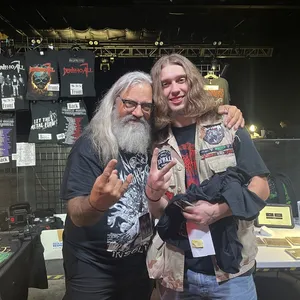
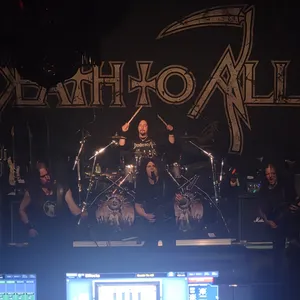
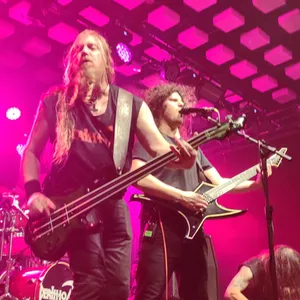
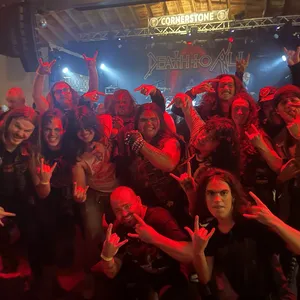
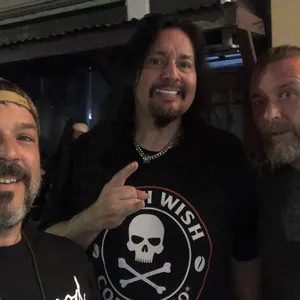
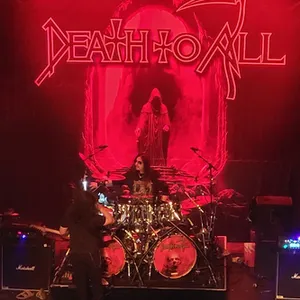
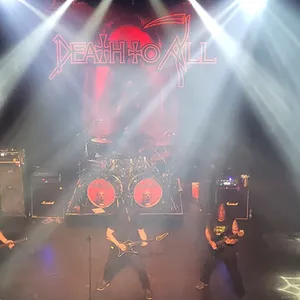
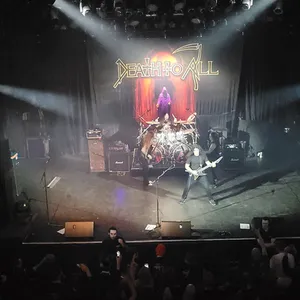
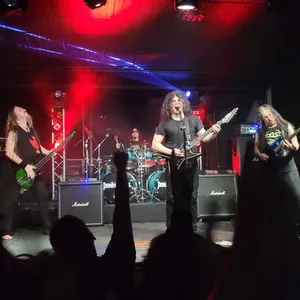
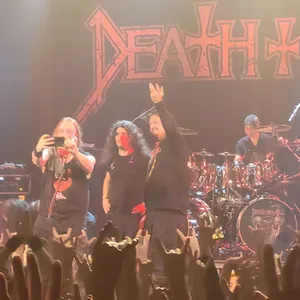
What fans are saying
Frédéric
One of the best suited of life. Loved 100% of the songs!!! Incredibly tight. As if Chuck was alive,
Le National
Montréal, QC
May 30, 2024
cadikill
Pretty bad ass we all miss chuck but if this is close as we can get I'll take it
Studio Seven
Seattle, WA
Dec 25, 2018
William
Great Music the people weren’t the best and it was very cramped but overall good show.
The Granada
Lawrence, KS
Jun 08, 2024
Jonathan
Holy shit what an event shoutout Cornerstone for being such an awesome fuckin host.
Cornerstone Craft Beer & Live Music
Berkeley, CA
Jun 22, 2024
Donovan
Show was fire af until they towed my car lol but great show!!!!
House of Blues Chicago
Chicago, IL
Mar 30, 2023
Similar Artists On Tour
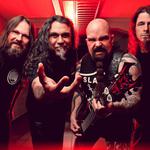
Slayer
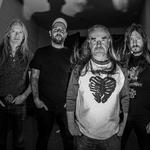
Carcass
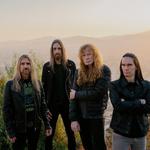
Megadeth
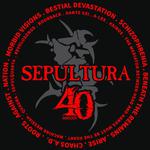
Sepultura
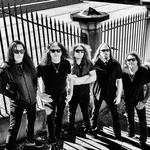
Testament
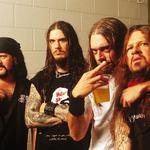
Pantera
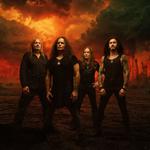
Kreator
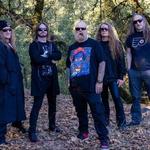
Exodus
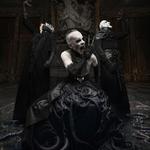
BEHEMOTH
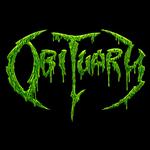
Obituary
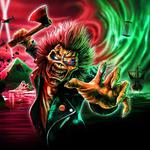
Iron Maiden

Anthrax
Death Tour Cities
Limeira, Brazil
Bogotá, Colombia
Montevideo, Uruguay
Panamá, Panama
Belo Horizonte, Brazil
Curitiba, Brazil
Porto Alegre, Brazil
São Paulo, Brazil
Tegucigalpa, Honduras
Frequently Asked Questions About Death
Concerts & Tour Date Information
Is Death on tour?
Yes, Death is currently on tour. If you’re interested in attending an upcoming
Death concert, make sure to grab your tickets in advance. The Death tour
is scheduled for 11 dates across 9 cities. Get
information on all upcoming tour dates and tickets for 2026-2027 with Hypebot.
How many upcoming tour dates is Death scheduled to play?
Death is scheduled to play 11 shows between 2026-2027. Buy
concert tickets to a nearby show through Hypebot.
When does the Death tour start?
Death’s tour starts Jan 18, 2026 and ends on Feb 01, 2026.
They will play 9 cities; their most recent concert was held in
Montevideo at Live Era and their next upcoming concert
will be in Bogotá at Auditorio CUN.
What venues is Death performing at?
As part of the Death tour, Death is scheduled to play across the following
venues and cities:
2026 Tour Dates:
Jan 18 - Montevideo,
Departamento de Montevideo @ Live Era
Jan 20 - Porto Alegre,
RS @ Opinião
Jan 21 - Curitiba,
Brazil @ Tork n' Roll
Jan 23 - Limeira,
SP @ Studio Mirage Eventos
Jan 24 - São Paulo,
SP @ Carioca Club
Jan 25 - Belo Horizonte,
MG @ Mister Rock
Jan 27 - Bogotá,
Bogotá @ Auditorio CUN
Jan 28 - Panamá,
Panamá @ Rock&Folk PTY
Jan 30 - Zapote,
San José Province @ Pepper Disco Club
Jan 31 - Tegucigalpa,
Departamento de Francisco Morazán @ RadioHouse CasaCampo
Feb 01 - Ciudad De México,
Mexico @ Circo Volador